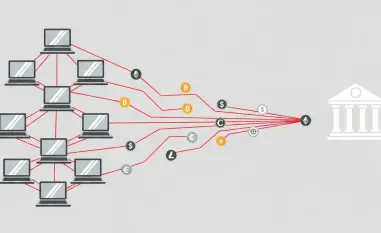The rapid shift to remote work has fundamentally altered the landscape of work and posed new challenges in ensuring cyber security. As companies adapted to the new normal, the pivot from traditional office environments to remote settings presented both opportunities and vulnerabilities in the realm of cyber security.
Current State of the Industry
In the wake of the pandemic, the prevalence of remote work increased dramatically. Businesses had to quickly implement remote work policies, often without sufficient time to bolster their cyber security measures. This hurried transition exposed many organizations to heightened cyber risks, including increased phishing attacks, insecure home networks, and insufficient employee training on cyber security best practices.
Detailed Analysis
Trends
Several trends have emerged as a result of the surge in remote work:
Increased Attack Surface: The widespread use of personal devices and home networks has broadened the potential attack vectors for cybercriminals. Remote workers often operate on less secure systems compared to corporate networks, making them easier targets.
Rise in Phishing Attacks: Cybercriminals have capitalized on the pandemic to launch sophisticated phishing campaigns. These attacks often exploit the fear and uncertainty surrounding COVID-19, luring employees into divulging sensitive information or clicking on malicious links.
Ransomware Threats: The healthcare sector, in particular, has seen a surge in ransomware attacks. With remote work, the confidentiality and availability of data have become even more critical, yet simultaneously more vulnerable.
Data and Forecasts
Data indicates a significant uptick in cyber attacks targeting remote workers. According to recent industry reports, phishing attacks have surged by over 60% since the increase in remote work began. Additionally, ransomware incidents have escalated, with a forecasted annual rise of 20% from 2025 to 2027 if companies do not enhance their cyber defense mechanisms.
Future Outlook
The future of remote work will undoubtedly involve a hybrid model where employees split their time between home and the office. This hybrid approach will necessitate robust, scalable cyber security solutions capable of protecting both on-site and remote environments. Adopting zero trust architecture, advanced threat detection systems, and continuous employee training will be crucial components of a comprehensive cyber security strategy.
Reflections and Next Steps
The findings indicate that while remote work offers numerous benefits, it significantly impacts cyber security. The vulnerabilities exposed during the rapid transition to remote work highlight the need for immediate action. Organizations must proactively invest in cyber security infrastructure and foster a culture of awareness to mitigate risks.
Moving forward, businesses should prioritize the implementation of secure remote access solutions, such as virtual private networks (VPNs) and endpoint security software. Additionally, reinforcing multi-factor authentication (MFA) and regular cyber hygiene practices will be vital in safeguarding against potential threats. Ensuring continuous monitoring and incident response planning will provide a defensive edge against emerging cyber threats.
In conclusion, the shift to remote work has had profound implications for cyber security. Addressing these challenges effectively will determine the resilience of businesses in the face of evolving cyber threats. Proactive measures, combined with ongoing vigilance, will help secure the future of work, whether remote or hybrid, ensuring both productivity and safety for all.













